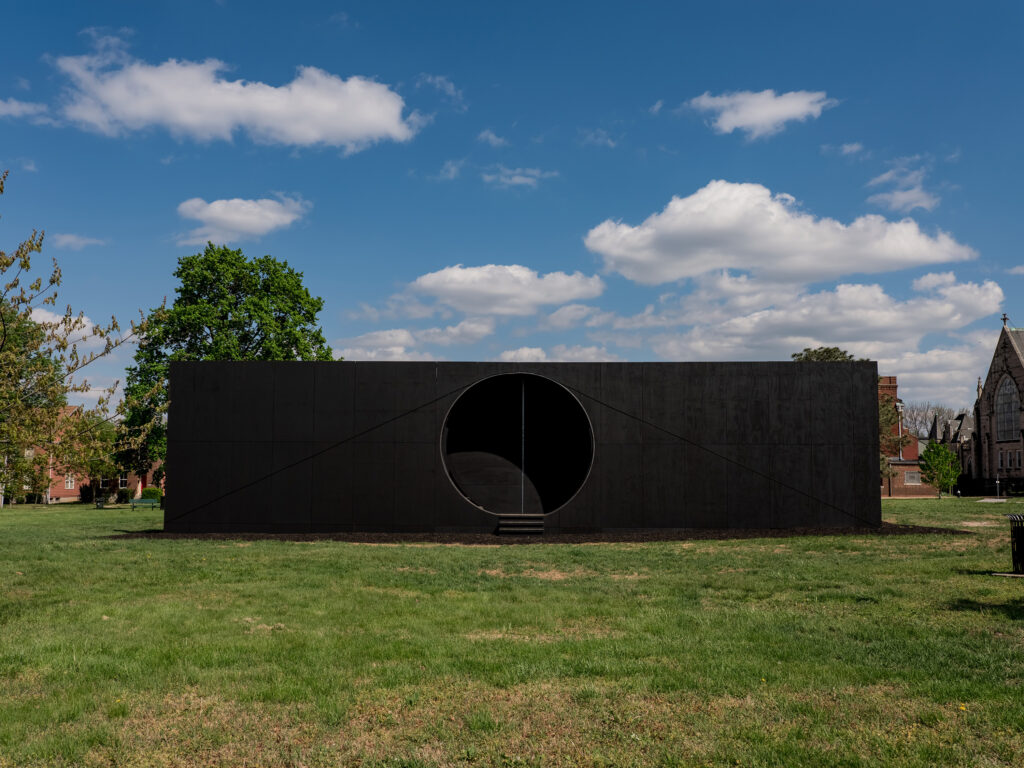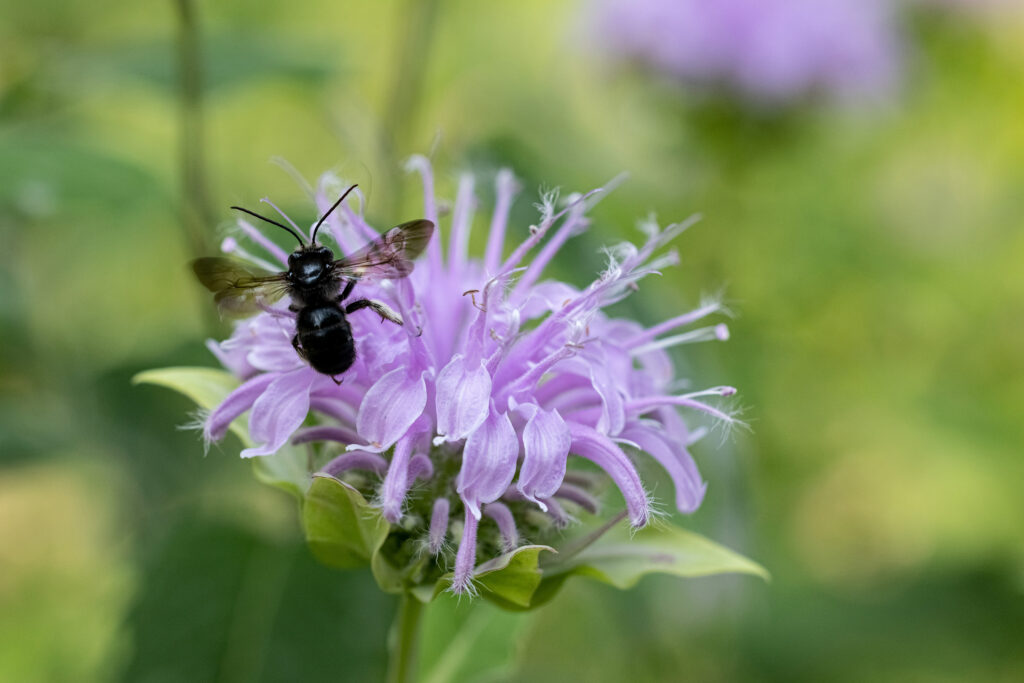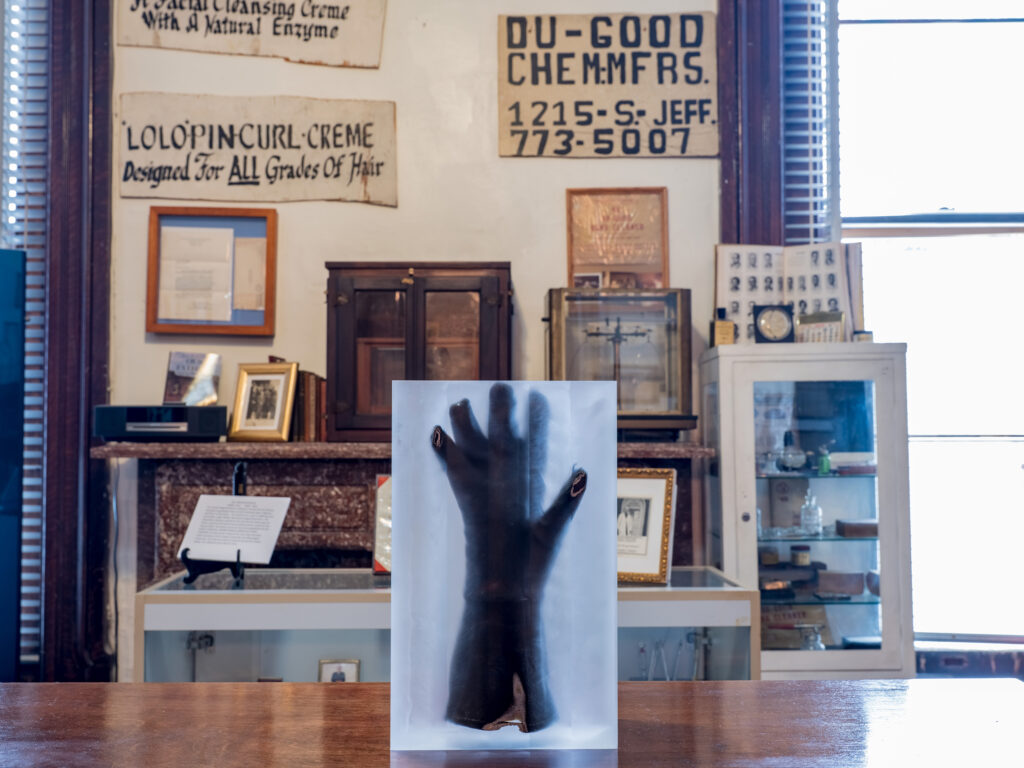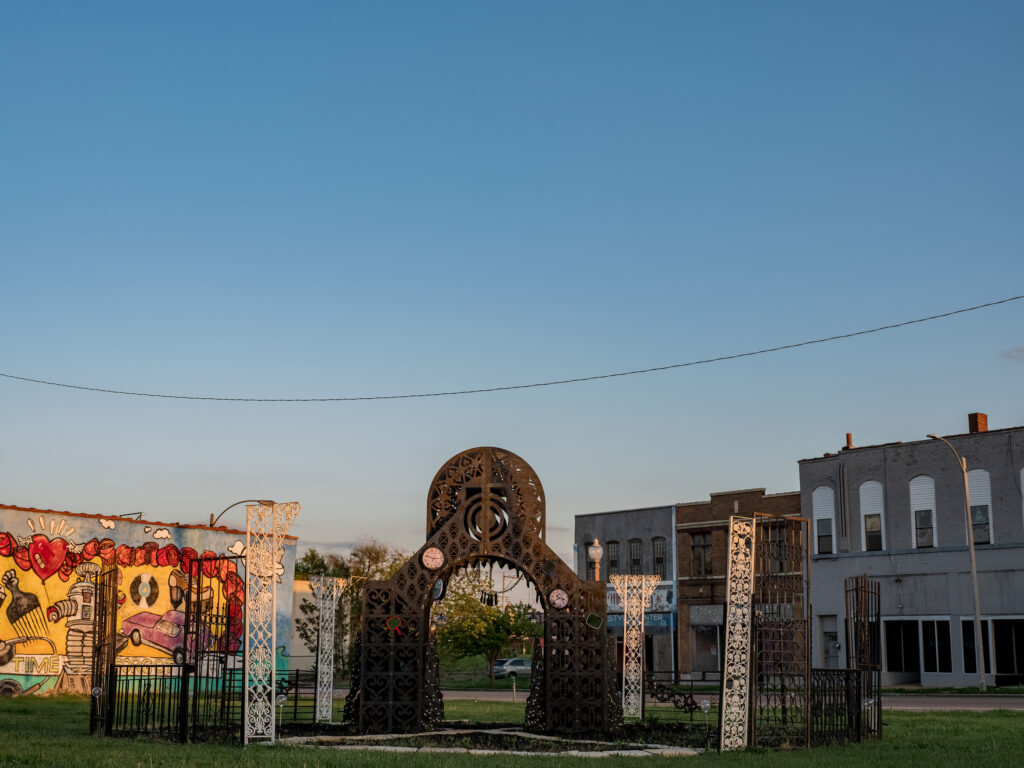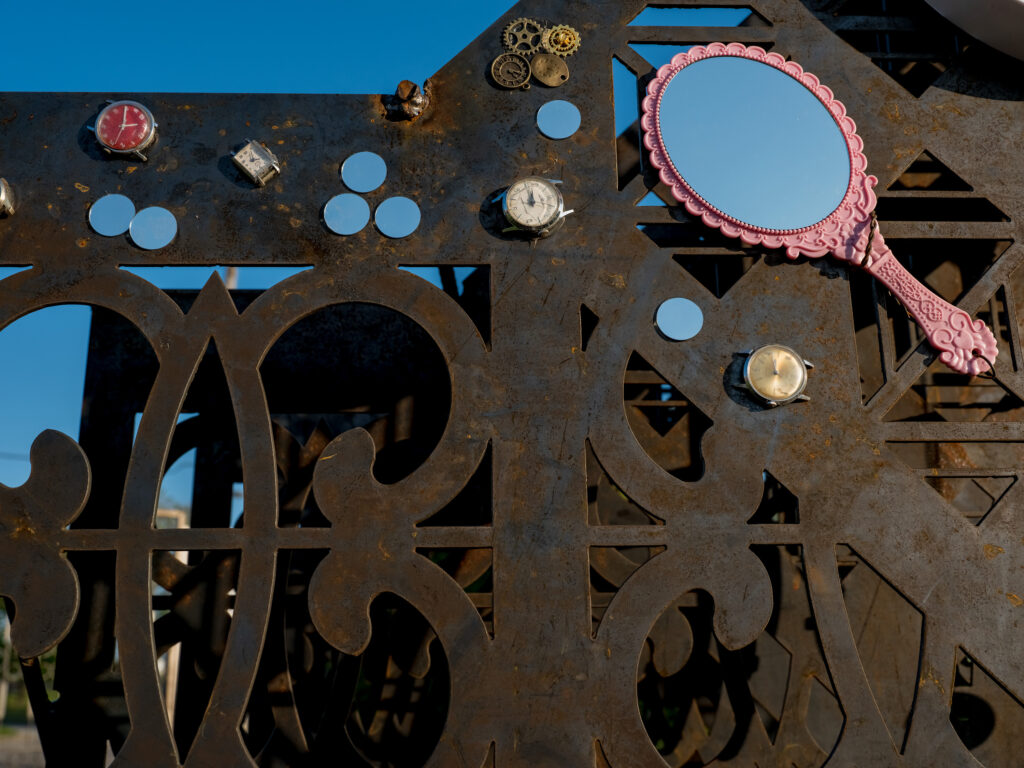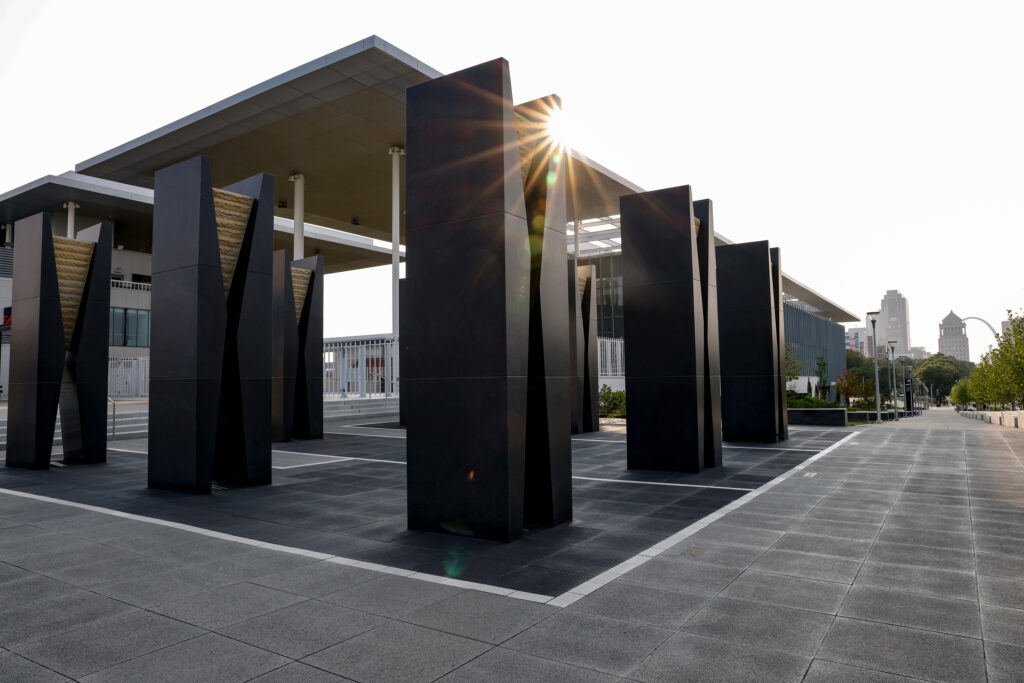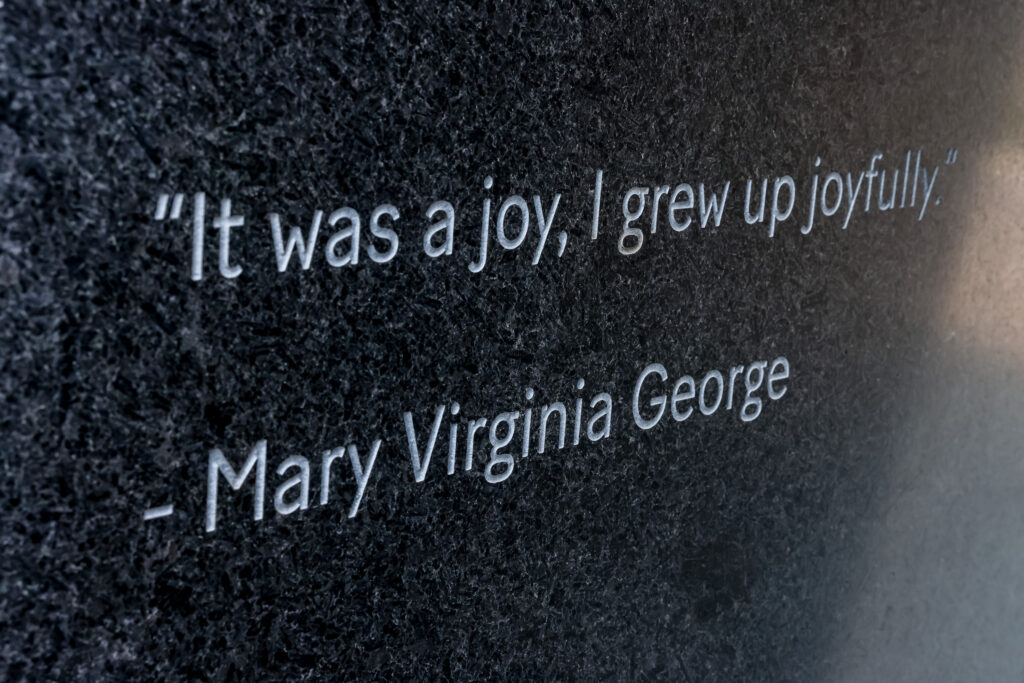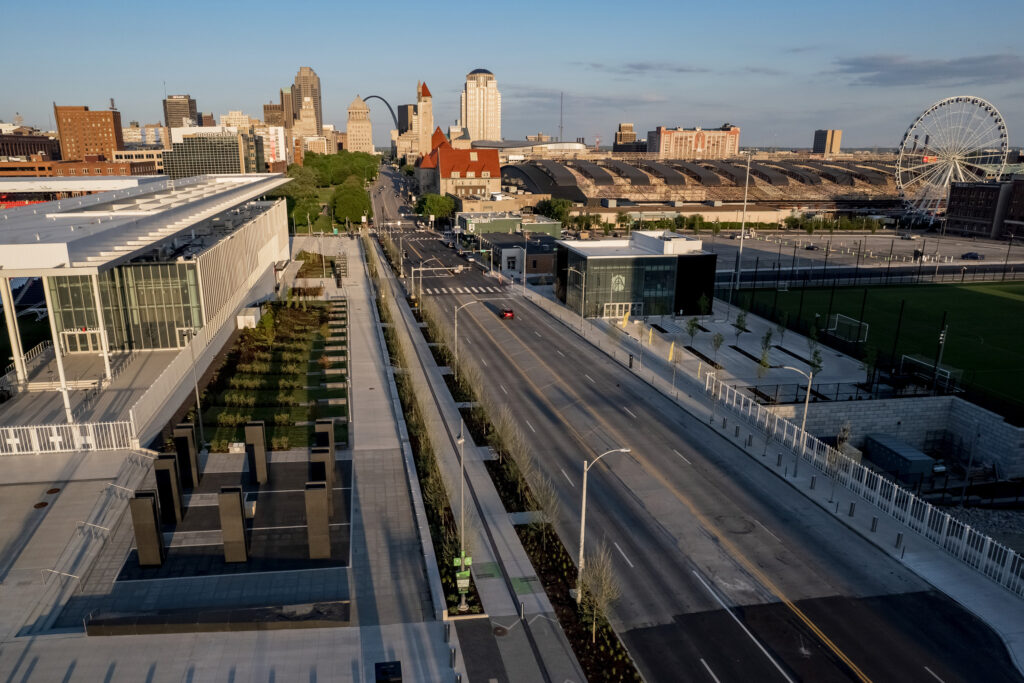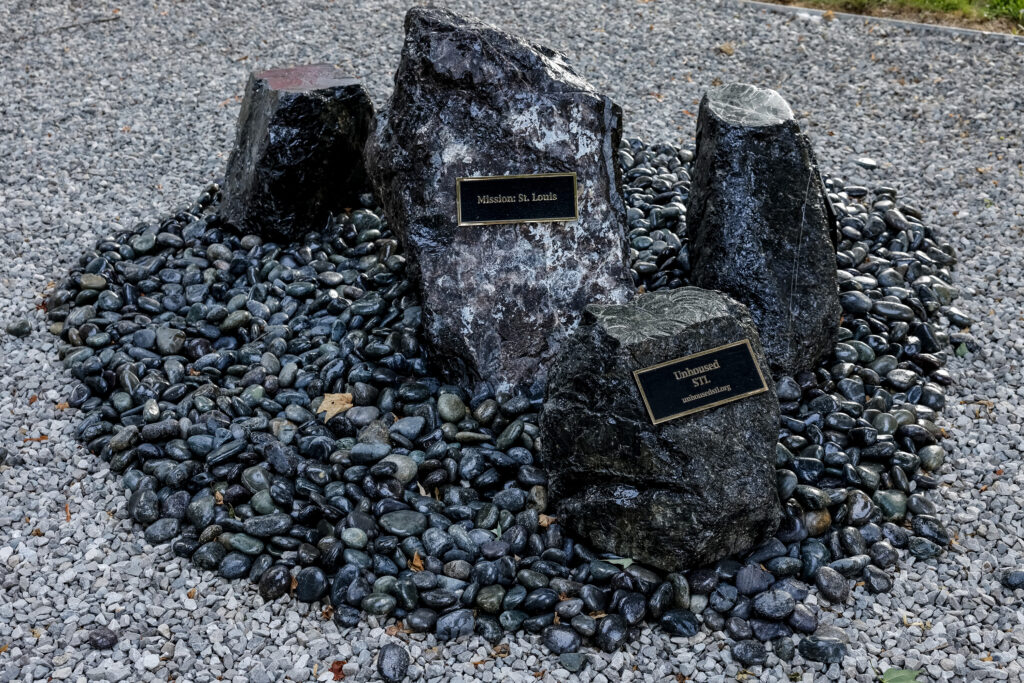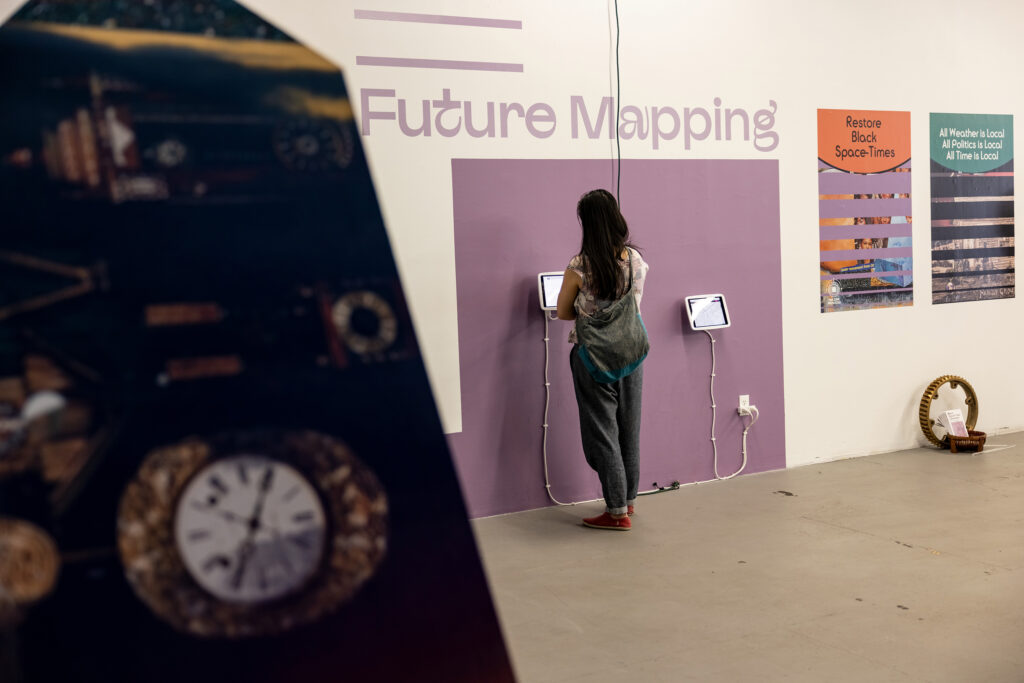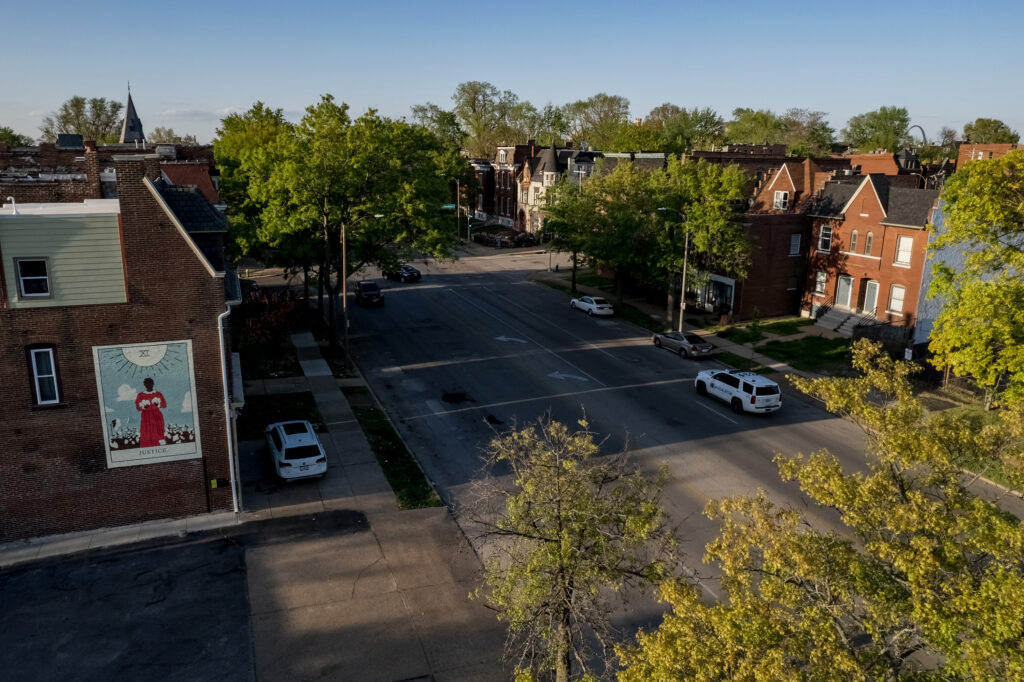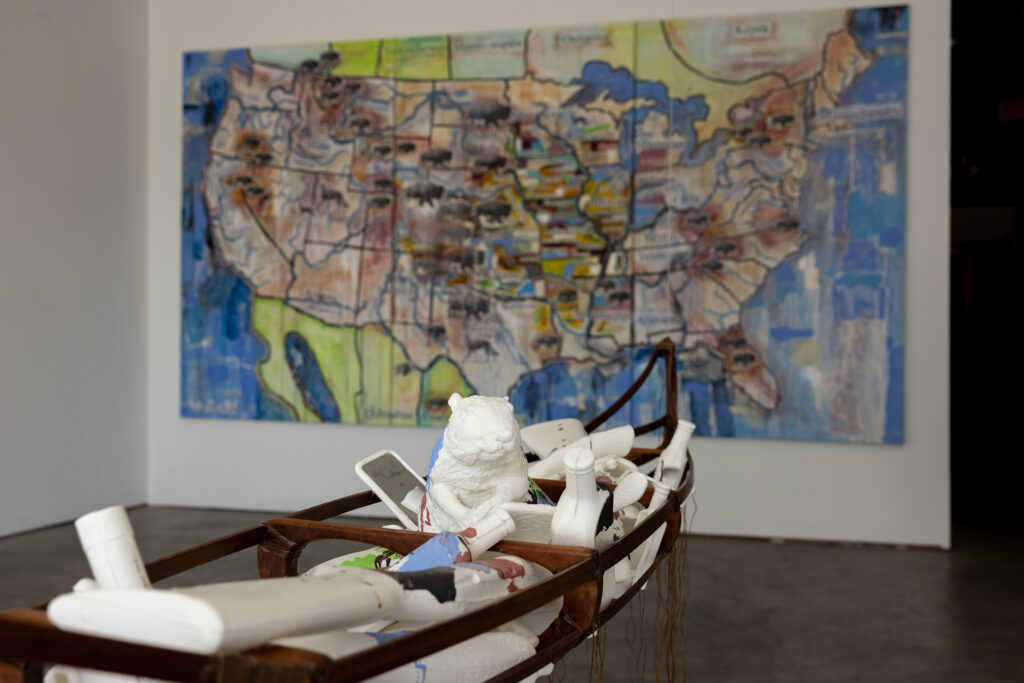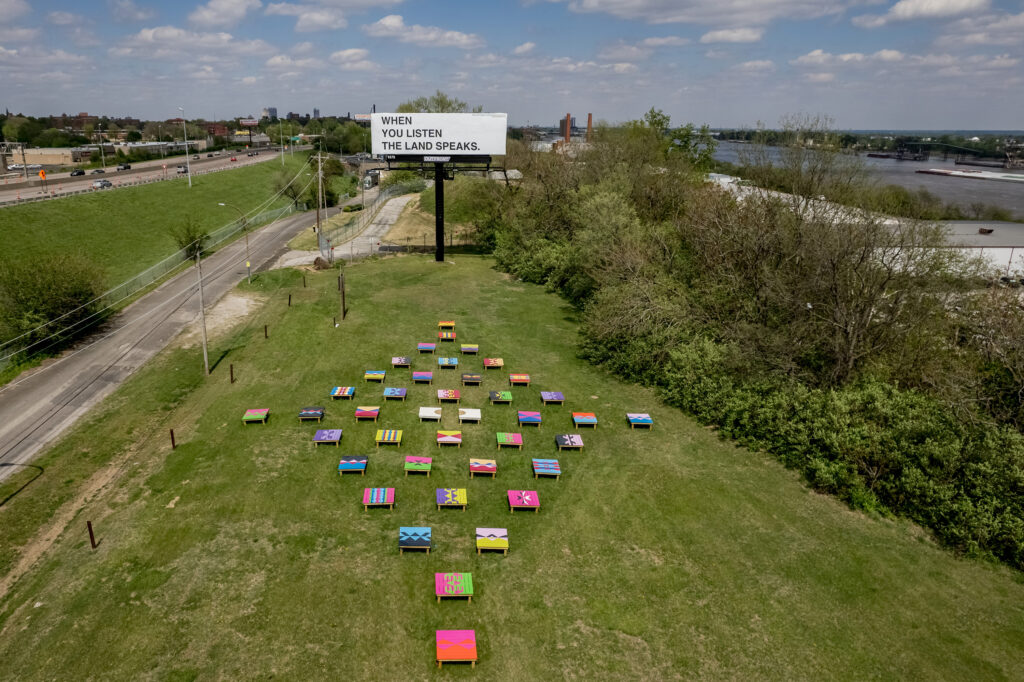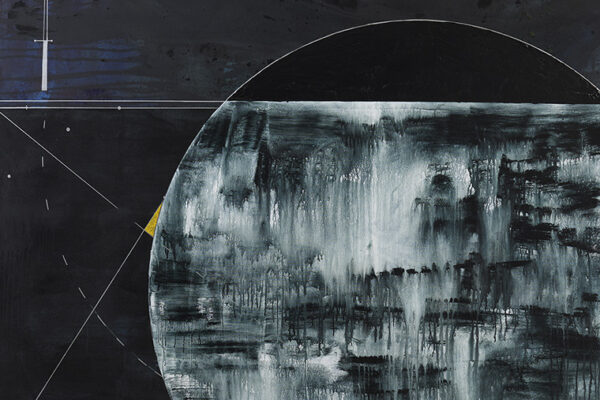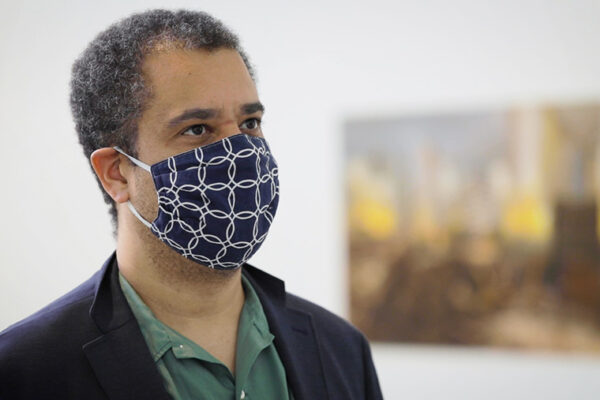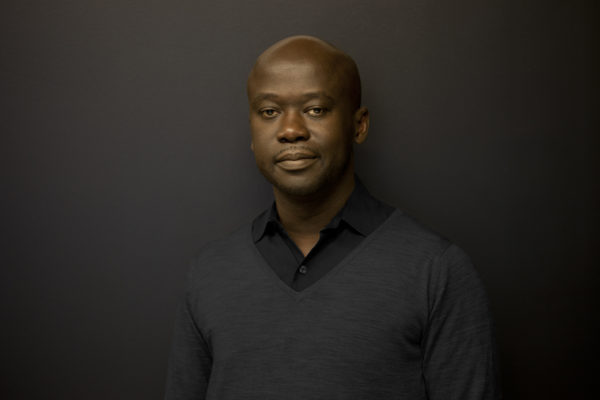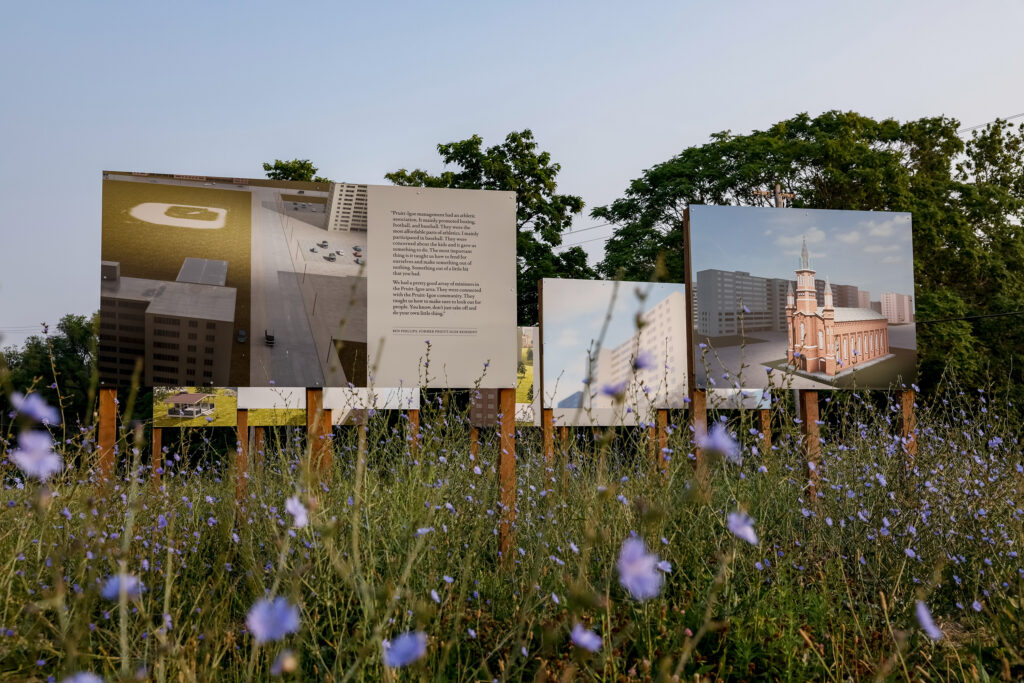
And now fifty years later
I’m looking back to that pile of rubble
How is it possible that I could’ve seen the future from a top that rubble
— Michael Willis, former Pruitt-Igoe resident
Cities rise and fall and rise again, sometimes all at once.
Standing at the intersection of Cass and Jefferson avenues, one looks north to the emerging National Geospatial-Intelligence Agency campus and south to the dense urban forest that still marks the former site of Pruitt-Igoe, the vast St. Louis housing project that was infamously razed a half-century before.
In his recent commission for Counterpublic 2023, the citywide public art triennial, digital artist Tim Portlock uses special effects software to create detailed, if highly subjective, architectural renderings of the Pruitt-Igoe complex based on the oral histories of former residents. The resulting images, mounted across a series of wooden panels, are at once warm, ghostly, intimate and melancholy — a testament to the promise Pruitt-Igoe once held and to the people who once lived there.
Portlock, a professor of art at the Sam Fox School of Design & Visual Arts at Washington University in St. Louis, is one of more than two-dozen artists, collectives and community organizers, many with WashU connections, invited to create projects for this year’s Counterpublic, which explores the entanglements of past, present and future. Artwork locations roughly mirror the arc of Jefferson Avenue, flowing from the Old North neighborhood, through downtown’s new Brickline Greenway and south to Cherokee Street and the Mississippi riverfront.

At the exhibition’s northeastern edge is “Decolonizing the Hive: Native Bee Stewardship Network” by Sam Fox School lecturer Juan William Chávez. Centered at the nonprofit Northside Workshop, which Chávez directs, the project encompasses a chemical-free teaching garden, bee sanctuary sculptures, a native bee zine and public engagement opportunities highlighting the importance of bees and pollinators to the urban ecosystem.
A half-mile west, in St. Louis Place Park, is “Bird and Lava (Scott Joplin),” an immense sonic installation by New York-based artist Torkwase Dyson. Inspired by the iconic St. Louis ragtime composer, Dyson — whose work is featured in a parallel exhibition at WashU’s Mildred Lane Kemper Art Museum through July 10 — mixes sound samples with a geometric compositional system that references the construction of player pianos as well as spaces associated with self-liberation. Rows of vertical slats, for example, curve outward as they rise, subtly suggesting the ribs of ship or a piano’s interior structure.
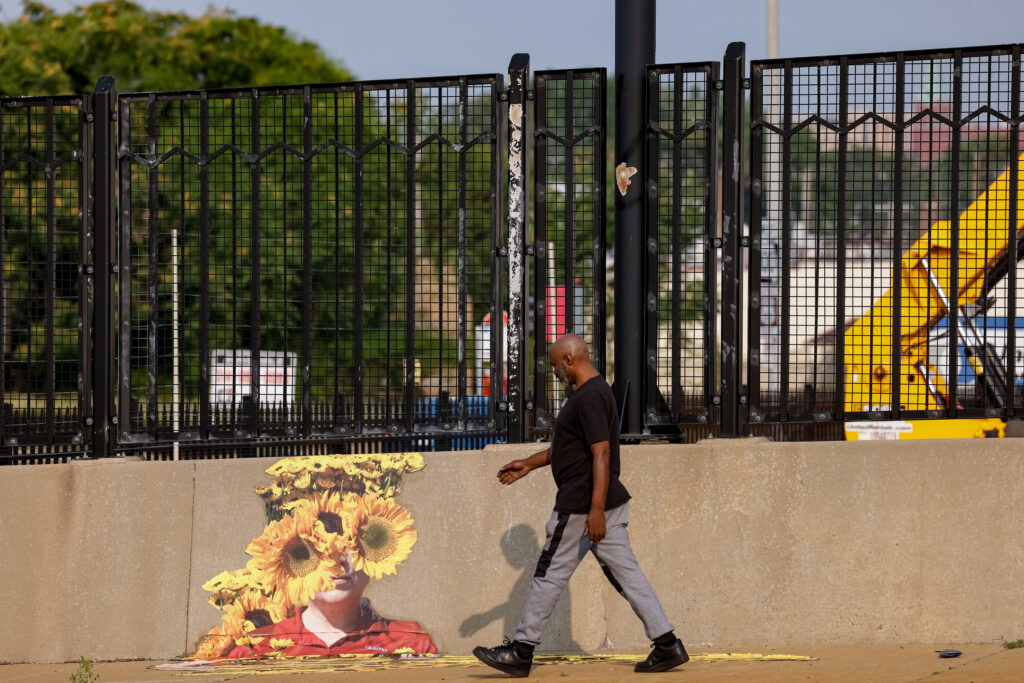
Sir David Adjaye, architect of the Smithsonian National Museum of African American History and Culture in Washington, D.C., received WashU’s International Humanities Prize in 2018. For Counterpublic, he returns to St. Louis with “Asaase III,” a rammed-earth sculpture that will be permanently installed on the grounds of The Griot Museum of Black History. Unveiling is scheduled for July 15.
Regenerative land artist Jordan Weber — who recently completed a residency with the Sam Fox School, the Pulitzer Arts Foundation and WashU’s Center for the Study of Race, Ethnicity & Equity — contributes “Defensive Landscape,” a series of obsidian boulders with commemorative bronze plaques. Situated in Memorial Plaza, near what was once the Mill Creek Valley neighborhood, the piece will be reinstalled as part of a rainwater garden in Peace Park, now under development in St. Louis’ College Hill neighborhood.
Continuing south along Jefferson, “While You’re Still Here” by Yvonne Osei (MFA ’16) greets motorists and pedestrians crossing the bridge between Scott and Chouteau avenues. Anchored by four large works printed on vinyl, the multipart installation intertwines portraits of everyday workers with brightly colored fields of flowers.
Multidisciplinary artist, and Indigenous futurist, X created this analog projection, titled “(a river) will flow” for the Mississippi River Bluffs, at 3939 South 1st St. (Image: Whitney Curtis/Washington University)
Other Couterpublic participants include celebrated Native artist Jaune Quick-to-See Smith, a former Sam Fox School Island Press fellow, who presents two new works at the artist cooperative gallery Monaco; and photographer and time-based artist Jen Everett (MFA ’19), who developed a series of community workshops focusing on preservation, record-keeping and the creation of vernacular archives. Micah Mickles (MFA ’24) served as the exhibition’s Sam Fox School of Design & Visual Arts Fellow.
Counterpublic 2023 remains on view through July 15. For a complete list of artists and projects, visit Counterpublic.org.

